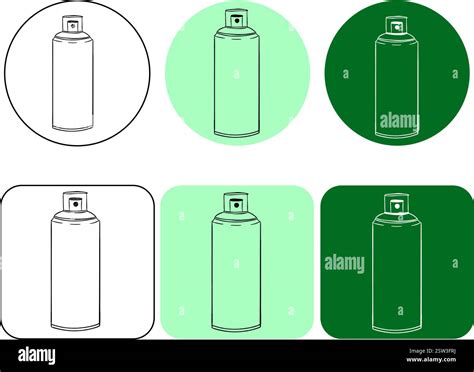What’s the optimal workout split for maximizing lean muscle and explosive strength gains?

Unlocking Dual Gains: Muscle and Explosive Strength
Achieving the coveted combination of lean muscle mass and explosive strength is a fitness holy grail. While often seen as separate training paths – bodybuilders focusing on hypertrophy and power athletes on performance – strategic programming can indeed maximize both. The key lies in selecting and adapting the right workout split to efficiently target muscle growth, neural adaptations for strength, and power development without overtraining.

The Science Behind Simultaneous Development
Building lean muscle, or hypertrophy, primarily involves increasing the size of muscle fibers through high volume, moderate intensity, and metabolic stress. Explosive strength, conversely, is about generating maximum force quickly, demanding central nervous system efficiency, motor unit recruitment, and speed of contraction, often achieved through lower reps, higher intensity, and specific plyometric or ballistic movements. The challenge is that both demand significant recovery and energy, and overly stressing one system can impede the other if not managed carefully.
Evaluating Common Workout Splits for Dual Goals
Several popular workout splits exist, each with merits for specific outcomes. However, when aiming for both lean muscle and explosive strength, some prove more effective than others:
- Full Body Split: Training all major muscle groups 2-3 times per week. Great for strength frequency, but volume per muscle group might be too low for optimal hypertrophy, and recovery for explosive movements could be compromised if not carefully programmed.
- Upper/Lower Split: Alternating upper body days with lower body days, typically 2-4 times per week. Allows for higher volume per session than full body and good frequency. This split provides a solid foundation for integrating both strength and hypertrophy blocks.
- Push/Pull/Legs (PPL): Training pushing muscles, pulling muscles, and legs on separate days, often 2 cycles per week. Offers excellent volume and frequency for hypertrophy and allows dedicated days for specific movement patterns, making it easier to incorporate power work on relevant days (e.g., lower body power on leg day).
- Body Part Split (Bro Split): Dedicating an entire session to a single muscle group once a week. While effective for maximizing localized hypertrophy volume, the low frequency per muscle group and lack of compound movement emphasis make it less ideal for developing systemic explosive strength.

The Optimal Hybrid Approach: Concurrent Training
For maximizing both lean muscle and explosive strength, a hybrid or “concurrent training” approach often emerges as the most effective. This involves strategically integrating dedicated strength/power sessions with hypertrophy-focused sessions within your weekly schedule. Here’s a framework:
1. Prioritize Power and Strength
Perform your most neurologically demanding explosive strength and maximal strength lifts early in your workout or on dedicated days when you are fresh. This ensures peak performance for these high-CNS exercises. Examples include:
- Power: Plyometrics (box jumps, broad jumps), Olympic lifts (snatch, clean & jerk variations), medicine ball throws.
- Strength: Heavy compound lifts (squats, deadlifts, bench press, overhead press) in lower rep ranges (1-5 reps).
2. Follow with Hypertrophy Volume
After your strength/power work, transition into higher volume, moderate intensity exercises to stimulate muscle growth. This can be done in the same session or on separate days. Focus on exercises that target the muscles previously fatigued or complementary muscle groups. Rep ranges typically fall between 6-12+ reps with shorter rest periods.

An Example Optimal Split (6-Day)
A common and highly effective concurrent split might look like this, often repeated with variation:
- Day 1: Lower Body Power & Hypertrophy (Explosive jumps/lifts, then squats, lunges, leg press, extensions)
- Day 2: Upper Body Strength & Hypertrophy (Push Focus) (Bench press, overhead press, then incline press, tricep extensions, lateral raises)
- Day 3: Lower Body Strength & Hypertrophy (Deadlifts or RDLs, then hamstrings curls, calf raises, glute bridges)
- Day 4: Active Recovery or Rest
- Day 5: Full Body Power & Hypertrophy (Plyometrics, Olympic lift variations, then a mix of compound and isolation work across muscle groups)
- Day 6: Upper Body Strength & Hypertrophy (Pull Focus) (Pull-ups/Lat pulldowns, rows, then face pulls, bicep curls, shrugs)
- Day 7: Rest
This type of split allows for high frequency for both strength and hypertrophy, dedicated power development, and sufficient recovery for each muscle group.

Key Considerations for Success
Beyond the split, several factors are critical for maximizing your gains:
- Progressive Overload: Consistently increase the challenge (weight, reps, sets, intensity).
- Nutrition: A caloric surplus with adequate protein is essential for muscle growth and recovery.
- Recovery: Prioritize sleep (7-9 hours) and manage stress to allow your body to adapt and grow.
- Periodization: Vary your training intensity and volume over time to prevent plateaus and overtraining.
- Listen to Your Body: Adjust your schedule based on fatigue and recovery levels.

Conclusion
While there’s no single “magic” workout split, a intelligently designed concurrent training program that prioritizes explosive strength and maximal strength work before transitioning into hypertrophy volume is arguably the most optimal approach for achieving both lean muscle and explosive strength gains. The PPL or Upper/Lower splits can serve as excellent frameworks for this, allowing sufficient frequency and volume. Remember to tailor the specifics to your individual recovery capacity, experience level, and specific goals, always prioritizing progressive overload, proper nutrition, and adequate rest.







